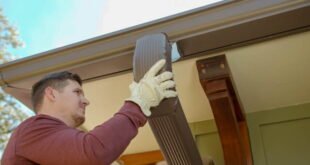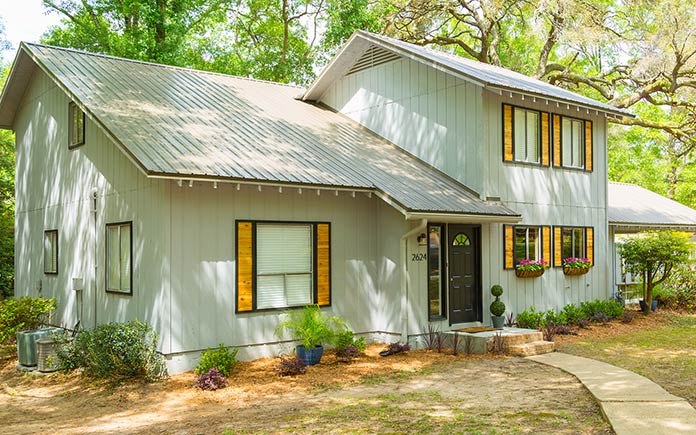
Thinking twice about renovating your home? It’s a common dilemma. You know your home needs updating and your roof needs replacement, but economic uncertainty freezes you from moving forward.
Unfortunately, homes don’t wait for recessions to end. Roofing wears out and severe weather strikes. So, there’s no time like the present to make smart improvements.
Consider these points before planning a major renovation.
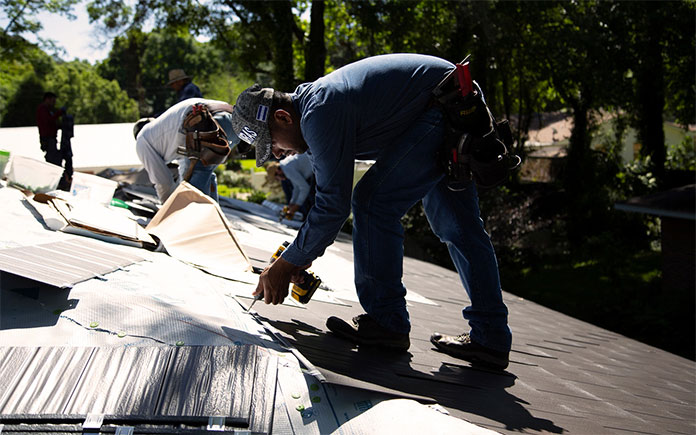
1. Know Your Options
Want to save money on utility bills? Re-roofing — that is, installing a new roof over an existing one — is a surefire way to do that.
Re-roofing with quality metal materials — those that are coated to increase energy efficiency — can save you up to 40 percent on annual heating and cooling costs.
Even basic, unpainted metal roofs reflect more solar radiation than asphalt roofs. But low-glare metal roofs with certain colors and coatings reflect mostly non-visible, infrared and ultraviolet rays. These produce the most heat and cause the most damage.
A common question is, “How much does it cost to reroof a house?” That depends on many factors, including the new roofing material, its features, and the contractor. However, re-roofing usually is more affordable than roof replacement, which involves ripping out the old roof, and all the costs associated with that, and installing the new roof.
Removing an old roof could set you back $ 1 to $ 5 per square foot, which means the average removal could cost $ 1,000 to $ 1,500, according to HomeAdvisor. If your roofing contractor charges hourly, expect to pay $ 40 to $ 80 per hour. Additional costs may apply, depending on the existing roof and roof decking’s condition.
Re-roofing removes some of those costs because you’re laying a new roof over the old one. Generally, you’ll only pay to correct any imperfections on the existing roof and install the new one. Re-roofing is also better for the environment because it keeps asphalt shingles out of the landfill.
Just check area building codes to make sure re-roofing is an option for your home.
Proper roofing installation is crucial. That means having adequate insulation, airflow and ventilation for all seasons. While it’s tempting to look in your attic, check for bare spots and purchase insulation to fill them, first check area building codes to ensure your insulation meets or exceeds standards.
Good eve and ridge ventilation systems help maintain consistent roof temperatures, regardless of the roofing material. Covering all of these installation details can help prevent expensive problems, such as ice dams in cold-weather regions.
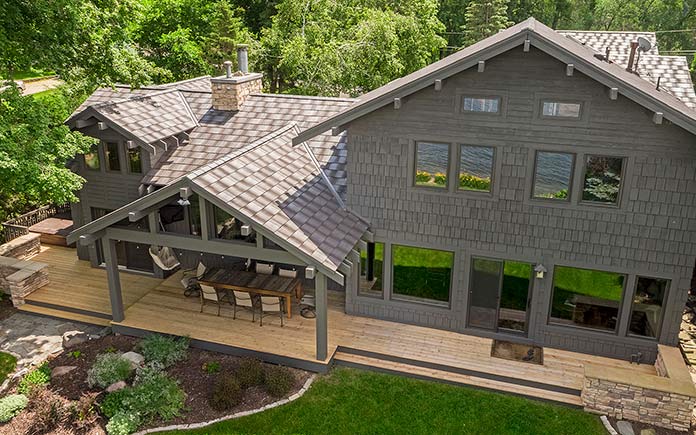
2. Consider Long-Term Costs
For large-scale home improvements like re-roofing, choosing the cheapest estimate is tempting. But the saying is true: You get what you pay for. Cutting corners on inferior materials and labor now could cost you much more later.
While asphalt shingles cover your home and get the job done, their limited life will leave you shelling out big bucks for repeated roof replacements. Not to mention the headaches and hassles that come with them.
Think of it this way: You could replace a 15-year asphalt roof three times — and worry about replacing shingles after mild to severe storms — or you could purchase a quality metal roof, which can last for as long as 50-plus years.
Best of all? You don’t have to sacrifice style for stability. Metal roofs now come in many styles, such as shakes, slate and tile.
So, the choice is yours. Pay more upfront now, reduce ongoing maintenance costs and save on long-term expenses, or choose cut-rate materials, pay more long term, and face more maintenance.
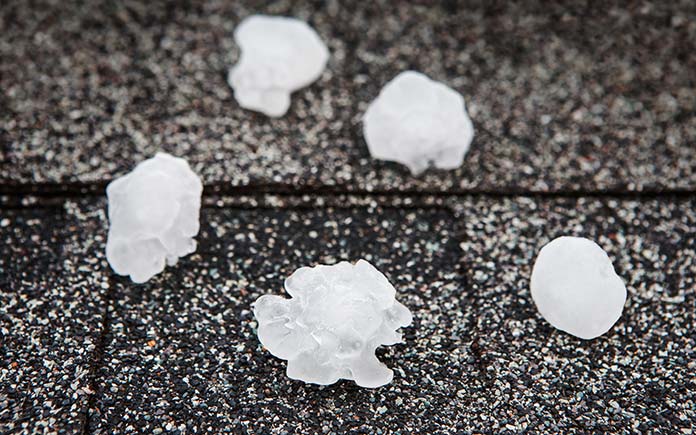
3. Prepare for Severe Weather
Damage from hail, hurricanes, wildfires and winter storms is rising, according to the Joint Center for Housing Studies of Harvard University.
In fact, spending on disasters totaled just $ 14 billion from 1996-1997 and almost doubled (to $ 27 billion) from 2016-2017. This was the latest period that the center collected data.
Wood shakes are an attractive roofing material, but they make your home especially vulnerable during wildfires. The more durable option is fire-resistant metal roofing.
And while hailstorms may seem insignificant compared to hurricanes, they wreak havoc on asphalt shingles. A direct hit from hail can crack a shingle. Then, water seeps in, which can cause major damage over time.
In some areas, homeowners insurance doesn’t even cover storm damage, so it’s important to make improvements now to guard against extreme weather later. You can start by investing in the best-quality roof you can afford.
The Metal Roofing Alliance, a nonprofit organization, can help. MRA, a leading authority on metal roofing, connects homeowners with experienced, vetted, trusted manufacturers, contractors and installers.
MRA’s track record provides peace of mind and assurance, whether your home improvement plans call for re-roofing or roof replacement.
Want to learn more? Download MRA’s free Metal Roofing Buyer’s Guide today or visit www.metalroofing.com.


